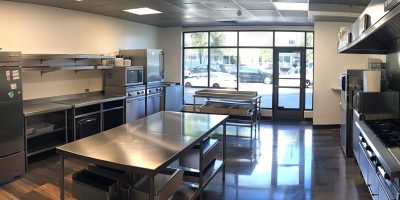Reduce Energy Bill: 5 Ways to Eliminate The Peak Demand Trap
High utility bills due to peak energy demand are one of the biggest challenges for mom-and-pop and major grocery chains alike. This is due to the energy devoured by commercial refrigeration units during peak demand (especially if your refrigeration system is old and unoptimized).
Discovering the key to energy savings can feel like a continuous uphill battle when demand charges drastically impact each property’s energy bill, regardless of whether you operate multiple identical franchises or buildings.
With factors like the AIM Act forcing businesses to phase down and go Net Zero by 2040 and the modern market becoming more competitive by the day, finding ways to significantly lower energy costs from commercial refrigeration consumption could greatly impact a business’s adaptability — making it harder to grow and thrive.
If you’re looking for ways to reduce your energy bill without jeopardizing the freshness of your products or disrupting operations, understanding the five techniques below will help you avoid the expensive peak-demand trap and drastically lower your energy costs.
5 Strategies To Reduce Your Energy Bill During Peak Demand
The average grocery chain is open for more than twelve hours every day, but even when the doors are closed to customers, that doesn’t mean the building actually shuts down. Aside from keeping the lights on for the security and safety of an overnight crew, commercial refrigeration units run 24/7 to ensure all products stay fresh.
Being that grocery stores can’t ever really shut off, it can lead one to believe that there isn’t a way to avoid the costly expense of running during peak demand. However, the following five strategies will demonstrate how even a 24/7 supermarket chain can operate efficiently, lower exercise penalties, and save more money on its energy bill.
Strategy 1: Proactively Choose The Right Rate Plan To Reduce Energy Bill
The appropriate rate plan is crucial in your commercial refrigeration cost reduction strategy. Once you’ve worked with experts to identify the correct rate plan that is tailored to your facility’s operational needs, you can significantly impact your utility costs. Here are some factors to consider when choosing a rate.
Ensure the tariffs (i.e. your rate plan) you analyze align with your facility’s operations. Tariffs are economic incentives that utilities use to encourage businesses to reduce energy usage during certain times of the day, thereby influencing changes in consumption patterns and alleviating as much stress on the grid as possible.
Additionally, the billing method, demand ratchet, can cause you to be penalized in low-demand ports of the year because of one high peak demand event for 12 to 18 months.
Strategy 2: Implement EMS Controls and Commissioning
40-50% of a grocery store’s square footage is devoted to refrigeration, which is a lot of equipment to power — and it’s expensive. Nationwide, running commercial refrigeration units costs businesses roughly $4 per square foot each year, and energy prices keep escalating. Grocery stores can incorporate EMS Controls that reduce peak demand and create opportunities to leverage incentives provided by (some) utility companies regarding load adjustments when grids are under additional stress.
Here’s how:
- A centralized system gives you oversight into power metering to all equipment panels.
- Identifying energy consumption spikes and addressing the cause as soon as they occur instead of reactively after the energy bill arrives.
- High-quality EMS controls help optimize the defrost cycle without jeopardizing product freshness.
Strategy 3: Retro-commission Facilities
The next option to reduce energy costs is retro-commissioning your facility. This method lets you adjust and optimize your current equipment so it operates via manufacturer design specifications, while also identifying areas to reduce consumption and demand. Overall, it is meant to improve how equipment and systems function synchronously–and the savings are extraordinary.
According to a report by the Department of Energy, “a retro-commissioning project implemented for a total cost of about $120,000 will generate annual cost savings of approximately $250,000.”
Installing energy meters before retro-commissioning can help you accurately track changes in your energy savings. It is a highly recommended step to ensure the best possible results. It also makes it easier and more effective to validate or dispute utility bill charges that may have been charged in error.
Be sure to write down your *current* peak kW, kWh, kW costs, and usage. You can use this information as a KPI (Key Performance Indicator). Note: It is (generally) easiest to generate a kW/ per square foot and kWh/per square foot KPI when comparing multi-sites.
Ideally, supermarket chains should retro-commission their commercial refrigeration equipment every two years to ensure optimal efficiency, operation, and cost savings.
Strategy 4: Implement Emergency Conservation Measures To reduce Energy Bill
The average timeline for generating an accurate retro-commissioning report will vary — and studies usually conclude during specific weather conditions. Overall, it takes an average of six months, but once you have your completed report, you can begin implementing ECMs (energy conservation measures) that meet your economic targets.
One such measure is researching and applying any relevant utility ECM rebates and grants available in your state. If a utility offers a rebate, that automatically means the resulting energy savings have been validated and the technology is running as intended.
The funds you gain from the rebates and the savings you achieve from more efficient operations can then be reinvested into future business projects or more energy conservation measures (such as improved insulation, additional energy-efficient equipment, and future retro-commissioning energy audits).
Strategy 5: Implement Automated Demand Response Programs
After your facilities are commissioned, you can participate in Demand Response programs. In real-world scenarios, demand response operates over several times yearly. Utility companies pay businesses participating in the program to reduce kW during specific periods. Most often, these reduced kW events happen less than ten times per year but significantly contribute to reduced strain on the grid.
Addressing term fluctuations in supply versus demand is less expensive than shutting down the whole power grid or buying power on the secondary market at a premium.
Some demand response programs include:
- Time-of-use pricing
- Critical peak pricing
- Variable peak pricing
- Real-time pricing
- Rebates for critical peak
The Difference Between Demand Response Programs and Demand Slide:
- Demand response programs let utility customers influence how the electrical grid functions by altering (or lowering) their individual energy usage during peak consumption times. DR is a solution to dealing with short-term fluctuations in demand and supply.
- Demand-side management addresses reducing energy demand over the long term (such as retrofitting to LED or upgrading to ultra-high-efficiency systems).
A Final Word On How To Reduce Energy Bill:
Aside from the benefit of reversing the troubling effects of global warming, optimizing energy consumption in your commercial refrigeration system creates more predictability and flexibility in your budget. A factor that not only improves the profitability of your business but offers the ability to grow, expand, and adapt to the market and compliance regulations today — and in the future.
We hope this article has offered you the insight and confidence to start developing your own energy bill reduction strategy.
Talk to one of our experts today to learn more about reducing energy costs during peak energy usage and complying with the AIM Act.



